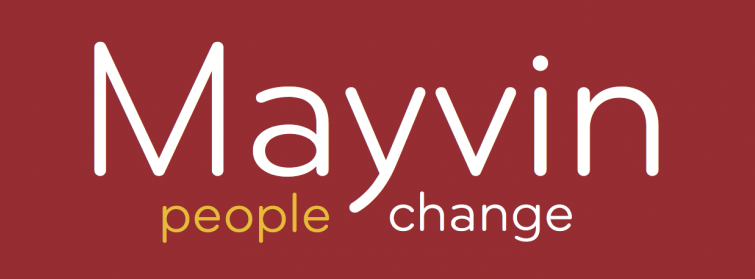Dr Naomi Stanford, organisation design practitioner, teacher, and author, shares her thoughts on reflective learning following our latest Mayvin Community event 'The Development Trap': How can you learn when there is no time for learning?
At the event, we explored how a ‘just in time’ leadership model can enable people to adapt and learn close to the grain of the work in discontinous times.
Mayvin's James Traeger was joined on the platform by Chloe Payne and Martin Devine from the OD & D team at the Department of Environment, Food & Rural Affairs (Defra) to discuss a just in time approach in the context of Mayvin's work with Defra.
Naomi writes:
‘How can you learn when there is no time for learning?' is a useful question to ask, and at the networking event we delved into discussing learning which is ‘as close to the actual work as possible, rather than something that happens ‘over there’, in a meeting or training session that people don’t have time for.'
The event came the week that I’d spent Wednesday afternoon doing e-learning courses. Two mandatory ones, one on GDPR and the other on Display Screen Equipment, and two discretionary ones, which we’d been asked to do as a precursor to a face to face session on the topic. Each e-learning programme took around 45 minutes. (There’s a free online GDPR programme from FutureLearn here. There’s a similar Display Screen Equipment course to the one I took here).
On Thursday morning I went to the 90-minute face to face session to consolidate the e-learning of the discretionary courses.
So, by the time of the Thursday evening event I’d experienced several training sessions that could be classed as ‘over there’, rather than in-the-job or close to the job.
So, were the e-learnings and the face-to-face course a good use of my time? Tim Urban, of Wait But Why points out that ‘Most people sleep about seven or eight hours a night. That leaves 16 or 17 hours awake each day. Or about 1,000 minutes. Let’s think about those 1,000 minutes as 100 10-minute blocks. That’s what you wake up with every day. Throughout the day, you spend 10 minutes of your life on each block, until you eventually run out of blocks and it’s time to go to sleep.’
He says ‘It’s always good to step back and think about how we’re using those 100 blocks we get each day.’ He asks us to ‘Imagine these blocks laid out on a grid. What if you had to label each one with a purpose? You’d have to think about everything you might spend your time doing in the context of its worth in blocks. Cooking dinner requires three blocks, while ordering in requires zero—is cooking dinner worth three blocks to you? Is 10 minutes of meditation a day important enough to dedicate a block to it?’
I remembered that post (which took me 2 blocks to find again) after I’d spent the time on e-learning which makes me suspect that my unconscious surfaced it because I was thinking that it wasn’t worth the roughly 24 blocks I’d just spent. I didn’t feel I was learning anything new but had to go through each page in order to take the end test.
I rather like that idea of taking 100 blocks per day and throughout the week seeing if the ten minutes I was in at the time was worth it. But I thought of a refinement of that activity after the networking event. What if for every ten-minute block I wrote down what I’d learned in the ten minutes it represented? Would I learn something every ten minutes? It sounds a bit of a stretch, but maybe.
That thought took me to the SELF Journal – that someone recommended to me a while ago. It’s a 13-week approach to achieving your goals. You ‘use the SELF Journal to prime your mind toward the positive.’ Each evening you complete a section on lessons learned during the day. ‘The Lessons Learned section should be considered an opportunity for reflection on what did not go as well as expected and an opportunity to improve on that area in the future. What will you do if you encounter the same obstacle again tomorrow?’
So, although suggesting that you prime your mind to the positive, the lessons learned section is about ‘what did not go as well as expected’. However, ‘Over time, you will begin to naturally see the opportunities for improvement as you go about your day. This will pattern a new behavior for how you consider problems and actionable solutions where you wouldn’t have been able to before. Consider reviewing the Lessons Learned lists throughout the weeks and months to see how much you have grown and learned.’
The common theme between the networking event, the 100 blocks and the SELF Journal is the process of reflection, and learning from that reflection.
There’s an excellent, practical guide to reflective learning from the Open University. It says that the two most important aspects of reflective learning are that it is deliberate and it is focused on the future. ‘For learning to happen, you need to use your thinking to affect future actions. The three points you need to consider are: generating and evaluating new idea, reflecting upon events and situations, reflecting upon relations.’
The guide’s author discusses three methods of reflective learning. Making the point that ‘There are many more methods … the important point is not to seek out some ‘correct’ form of reflective learning, but to seek out a method that works for you.’
Combining the ideas of reflective learning, in-the-job, and the worth of blocks of time, I decided to see what I was learning in the (typically) 7 meetings per day I go to, each one lasting 45 -60 minutes. Some are meetings I’ve called, others I attend as a participant, so I could reflect on my own meetings skills and those of others.
A recent HBR article pointed out that there is little reflection on the value of meetings. ‘The goal should be not to kill all meetings but to eliminate the ineffective or unnecessary ones and improve the quality of those that remain …. It’s up to managers to make positive changes by objectively assessing and improving their own meeting skills.’
After only a couple of days, I feel I’m learning through meetings – so even in cases where the meeting content may not be worth 6 ten-minute blocks, the process of reflecting on the meeting process, style, relationships, tone and outcomes is. Some things I’m finding help the reflection are the left hand/right hand column exercise – doing it as the meeting proceeds, an article on ‘Plan a better meeting with design thinking’, and a meetings cost calculator which helps focus the thinking!
What have I learned so far? I’m learning to develop better ways of helping people on the phone feel included in the meeting (whether or not the meeting is ‘mine’) and when I’m the one on the phone learn to participate more effectively, (if you haven’t seen it, watch the 3-minute video – A conference call in real life) . I’m learning to notice when and why my attention sidles off the meeting – lured by tech bleeps and alerts. I’m learning to practice listening more attentively to what other people are and are not saying.
The question I’m now reflecting on is how to keep up this level of reflection and still do the work? Maybe I’ll have time over the Easter weekend to tackle it. It must be worth 6 blocks to do that.
How many blocks do you spend on reflective learning in your work day? Are they worth it? Let me know by tweeting @naomiorgdesign @MayvinLtd.
Note: this is an edited version of Dr Naomi Stanford's original blog which was first published on 15 April 2019 on Naomi's blog here: https://naomistanford.com/2019/04/15/block-value/.
Dr Naomi Stanford is the author of six books and also writes articles, speaks at conferences, blogs and tweets regularly on organisation design. Find out more at: naomistanford.com
Our Mayvin Community events are forums for sharing our latest thinking and inquiring together to explore the organisation development, design, leadership and change issues that are most relevant to your practice. They're also a great opportunity to connect with like-minded practitioners. Contact us to find out more.

